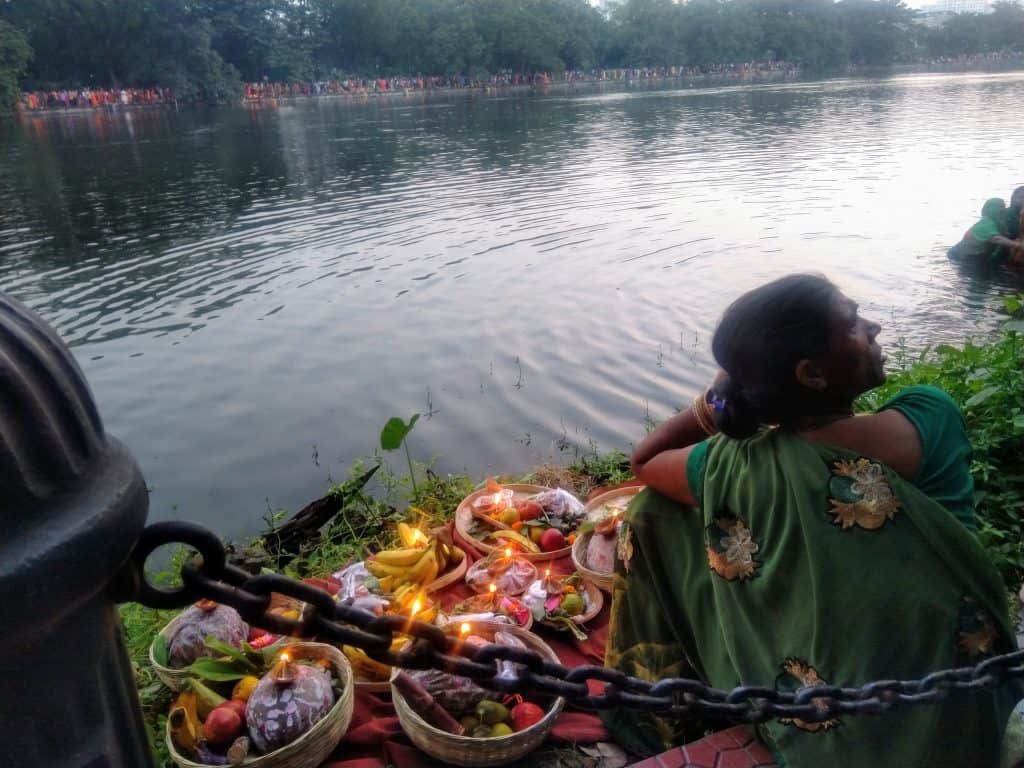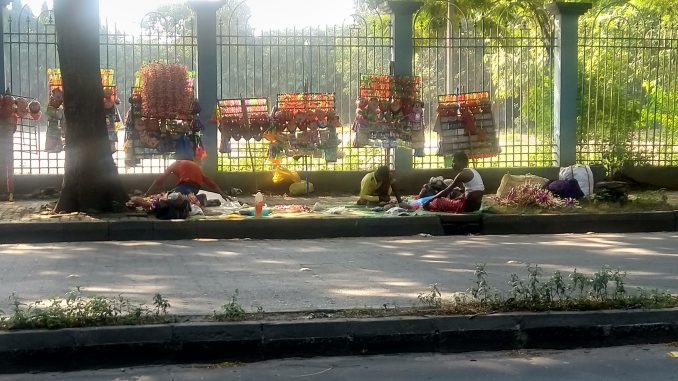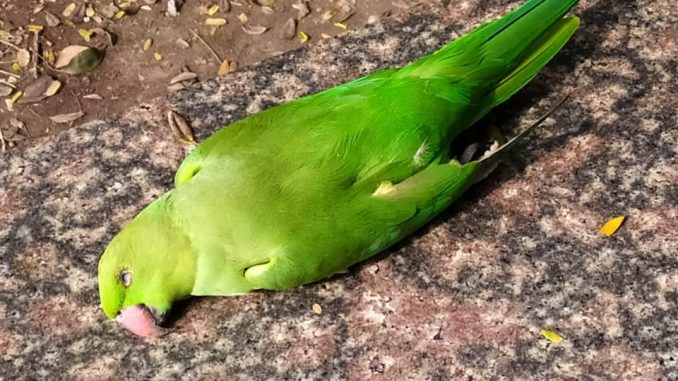“The hardest thing to explain is the glaringly evident which everybody has decided not to see.” This quote from Russian-American author and philosopher Ayn Rand’s bestseller, The Fountainhead, aptly describes everything that happened at Rabindra Sarovar since early morning on November 2nd well into the following day, as an order from the country’s green court — the National Green Tribunal (NGT) – was brazenly flouted to allow the conduct of Chhat Puja in the Sarovar premises.

A woman gets ready with her puja offerings, which includes lit up diyas on thermocol bowls, to be floated in the water as per ritual. Both the oil in the diya and the thermocol bowls are dangerous for marine life. Photo by Mou Chakraborty
An earlier story on Citizen Matters had detailed all the precautions and steps that had been taken to protect the national lake from toxic pollution that inevitably results from Chhat rituals traditionally conducted at the lake. To ensure that the exercise of religious freedom would not be curbed in anyway, alternative locations had been set up for devotees. This, in cognizance of the 2017 NGT order that banned all festivities in and around Rabindra Sarovar.
However, while courts can pass numerous orders, in the absence of political will, it is impossible to implement the same in letter and spirit. And that is what was demonstrated amply and clearly through whatever happened at the Sarovar over the weekend.
Despite KMDA giving a letter to the Kolkata police, requesting protection at all the 15 gates of the Sarovar to prevent Chhat devotes from entering, no police personnel turned up till 10.30 AM on November 2. By then the goons had already broken the locks of gate number 3 beside Lake Gardens station and the Mother Dairy Gate of the Sarovar.
Soon the news of two more gates being forcibly opened had spread and small vendors had already started setting up their stalls on the footpaths to sell toys, knick-knacks and snacks to the Chhat revelers. From 3 pm the Chhat devotees started streaming in, arriving at the venue on small trucks.
At around 4.30 PM, when several devotees had already entered the Lake premises and settled their belongings by the Lake side for the puja, some top police officials arrived from the Kolkata police headquarters. As TV cameras swerved to focus on them, they tried to explain to the devotees why they should not use Sarovar as the venue of Chhat puja; they requested them to shift to any of the alternative 14 venues prepared by KMDA. Later, 11 people were reportedly arrested for breaking the locks of the two of the 15-gates of Rabindra Sarovar.

The lock of two of the 15 gates of Rabindra Sarovar were broken on the morning of November 2. Seen in this picture is the open gate of the Sarovar and a notice announcing the ban order by NGT and an order from KMDA announcing the closure of the Lake from November 2nd to November 3rd on account of Chhat puja. Pic: Mou Chakraborty
But by then, both for the devotees and the environment activists trying to stop them, it was clear that the stance taken by the police was just an eyewash. They were trying to get some publicly documented proof of their effort to implement the NGT order. After all, the Chief Secretary of the state will be answerable to NGT on why the state failed to implement the NGT contempt order.
Therefore, small wonder that when over 12,000 devotes again came back at the Sarovar from 3 am on November 3rd there were no policemen trying to turn them away or even explain to them not to burst crackers inside the Lake premises or not to beat drums. Loudspeakers belted out dance tracks and laser lights added to the open air disco vibe for the dancing revellers. Plastic was littered all over.

Soon after the locks of two gates of Rabindra Sarovar were broken vendors in the morning of November 2 street vendors line up kinck knacks in anticipation that Chhat devotees would come to the Lake to offer puja. Photo by Mou Chakraborty
While birds and animals around the Lake had to adjust to ‘just two hours of disturbance’ as the devotees put it, marine life clearly had more serious problems to grapple with. Television coverage after the event showed overzealous political workers along with some devotees, who were helping the KMDA staff to clean up the place, washing the ghats (the temporary steps leading to the lake). In the process, they were just dumping the dirty water, with all the toxic residue, in the Lake itself!
It is not difficult, therefore, to explain the deaths of fish and turtle in the waters that have come to light since.
The answer, my friend, is blowin’ in the wind
As environmentalists fume over the alleged deliberate failure of the government to ensure citizens’ right to breathe clean air and have a green sanctuary, a number of not-so-easy questions inevitably arise:
One, the KMDA had presumably spent mammoth amounts of public money for publicity and arrangements related to construction of 14 new chhat puja venues, putting in place preventive measures for not allowing Chhat puja at the Sarovar and organizing free vehicles to ferry devotees to the alternative venues. How is it that no significant effort was seen either on the part of the local government or the law enforcement agencies to ensure that these arrangements were in fact utilized?
Given the experience of previous years, why were no local leaders ever seen making a meaningful, sustained attempt to engage with devotees in person in the days and weeks leading up to the festival, explaining to them why the lake should not be a venue for Chhat puja?
Also, according to lawyers, a huge fine of more than Rs 10 crore may now be slapped by NGT for the contempt order violation by the West Bengal government. However, throughout the day on November 2nd and 3rd, leaders of the ruling Trinamool Congress and the opposition BJP were seen giving out press statements on how the sentiment of the Chhat devotees cannot be ignored. Yet, not one strong word from them on the necessity to protect the environment.
The fact is we are still a long, long way off from the day when environment protection becomes a poll plank. And so, when you have both the ruling party and the opposition only interested in wooing voters, keeping the 2021 Assembly elections in mind, neither environmental advocacy nor Court orders stand much of a chance.
Those who understand the NGT verdict and have obeyed it, do not base voting decisions on the action taken by various political parties on climate change, or how it impacts their lives and future, but those who entered the Lake for Chhat always keep this in mind while casting their votes. And hence, democracy gave them this prize, while this is what they did to the larger ecosystem in return:

Just a day after the Chhat puja, dead turtle were found floating in Rabindra Sarovar. Photo by Sumita Banerjee

